March 26, 2009 by J.A. Howard-Gibbon
This week I thought I would change things up and give you a bonus blog entry. There are just some many plants I want to write about. Next week it will be back to the quiz, consider this to be your spring break.
Yellow is the colour I most associate with spring. There are some many yellow blooming flowers; Cornelian Cherries,Crocuses, Forsythia and the kings (or queens) of spring, Daffodils. I have always loved Narcissus from their bright sunny color to the light clean scent of their blooms. Having a vase of Daffodils in a room makes it feel more inviting and always brightens up a cloudy day.

Tete et Tete, the earliest Daffodil here.
Known from ancient Greek times and there are many references to the Daffodils in Greek literature. The coming of spring was associated with Persephone who was the goddess of the underworld and represented earth’s fertility. One day the beautiful Persephone went out to gather some flowers for her mother Demeter, she saw a golden flower that was put there her by her father Zeus, the king of all the gods. When she went to pick it, up popped Hades the god of the Underworld who whisked her down into the depths of the earth. He wanted her to be his consort and reign with him underground for all year but was forced to return to her mother’s people every spring. With her coming she brought spring, the reawakening of dormant fields and a new season of growing plants and productive crops. This is why the Daffodils have been called Persephone’s flower.

King Alfred, the Most Common Old Hybrid.
Another myth relates to the name Narcissus which is the species name for Daffodils. The handsome Narcissus was so self absorbed and in love with his own image that one day he paused to gaze at his image in a stream. As he leaned closer to admire himself more, he fell in and drowned in the water. Narcissus is the classic latin name derived from Greek “narkisso” or narke which is root of the word narcotic.

A Nice Bicolor which is Seen in the Victoria Area.
The name Daffodil is derived from an earlier “Affodell”, which is derived from the Dutch ‘de affodil’ meaning Asphodel (Asphodelus luteus, a member of the lily family found around the Mediterranean which has yellow flowers). Daffodil as a flower name is known from at least the sixteenth century in English literature. Another common name for Daffs is Jonquil which is said to come from Spanish jonquillo which refers to the leaves of the plant looking like that of common Rushes (Juncus species).

Some Daffodils Which are Closer to a Wild Form.
In Canada we often associate the Daffodil with the Canadian Cancer Society, for the flower is it’s symbol and represents hope. ‘Daffodil Days‘ began in 1954 in Toronto as a way to raise funds and has been incredibly successful. Originally it was a tea which was hosted at a large store which 700 ladies attended, Later it was extend to restaurants were involved in collecting funds for the society the first day of canvassing every year. Volunteers would be at the restaurants handing out Daffs to the diners. Curiosity from seeing so many Daffodils made people want to buy the flowers from the canvassers. The society realised that selling the flowers would be a good way to generate funds, and so the following year 5000 daffodils where shipped from Victoria to the Toronto area and sold. Selling of the blossoms continues to this day and the Cancer Society is now the worlds largest purchaser of the flowers, around 18 million a year, which are grown here. Last year in B.C. $450,000 was raised for the Cancer Society this way.

Imagine a Bouquet of These Daffodils on Your Kitchen Table.
Daffodils are native to Central Europe, the Mediterranean region and a few species are found in China. There are many forms and colours for you to choose from if you want to grow some for yourself. Narcissus are probably the easiest bulbs to grow.. Choose plump clean bulbs which are not discoloured, dried out or mushy. The best planting time is between late August and early October after the ground has become moistened by rain, the longer the rooting period the better the product the following year. This gives the newly planted bulbs longer rooting time so they will increase in bulb, flower and stem size.

'Thalia', the Purest of the Whites.
Narcissus are not very particular about the soil they are grown in. the best will be slightly on the side of acid of neutral. They do not like sodden ground, so, free drainage is important. Soil should be deeply dug as these are large bulbs. Digging to double depth of a spade is recommended. At this time some humus can be incorporated with a dusting of potash to and further general fertiliser if needed.

A White Bi-color With a Peachy Trumpet.
Planting depth is vital for the bulbs to produce flowers the following spring, if too deep flowers will not likely be seen and if planted to shallowly the bulbs could split. It is generally a rule to plant Daffodils with 10cm (8 inches) of soil over their tops. Smaller forms will be planted less deeply. The holes dug should be 2 ½ times the length of the bulb. By spacing of bulbs 15cm (6 inches) apart the plants can be left for up to 4 years before they need to be lifted for division.

Mass Plantings of Daffodils are Impressive.
Links Related to This Post:
Wiki has an impressive page on Daffodils. http://en.wikipedia.org/wiki/Daffodil
The American Daffodil Society. http://www.daffodilusa.org/
The story of how Daffodils are associated with Cancer Research. http://www.cancer.ca/Canada-wide/How%20you%20can%20help/CW-Fundraising%20activities/CW-Daffodil%20Days.aspx
Posted in Bulbs, groundcovers, Mass Plantings | Tagged British Columbia, Daffodils, Early spring flowers, Early yellow flowers, February blooming, February flowers, fragrant flowers, fragrant yellow flowers, frangrant flowers, March blooming, March flowers, Narcissus, spring bulbs, spring flowering bulbs, Spring flowers, Victoria, white flowers, yellow flowering bulbs, yellow flowers, yellow spring flowers | 6 Comments »
March 23, 2009 by J.A. Howard-Gibbon
When my sister was a little girl she was a very ‘girlie’ girl, wearing long prairie dresses and had long flowing beautiful hair like a little princess. I always wanted to get her special little gifts, one time i found this charming little white glass flask of perfume which was painted with purple violets. She loved the gift and played with it in many ways and still cherishes that bottle to this day. The elusive fragrance in that container was extracted from the Sweet violet (Viola odorata), one of the most famous of all scents.

Sweet Violet
This extremely dainty plant has been known since the ancient times as having special appeal. Around the Mediterranean area most cultures which originated there knew of it’s special properties and used it for medicinal treatments. In Rome it was used Viola odorata for scenting sweet wines, the Greeks knew it as a herb and made perfumes with it. It is used in Indian Ayurvedic and the Unani systems of medicine to reduce inflammation and easing of colds and coughs. It is also listed in Arabic and Persian medical writings.

Common color of Viola odorata.
Sweet Violets have been written about in famous verses, who hasn’t said at least once ” Roses are red, Violets are blue”, I know I have. In Medieval times Sweet Violets were used as a herb which was spread or strewn about the house to ‘sweeten’ the air. Napoleon was so obsessed with the tiny flower that he is said to have died wearing a locket filled with the tiny blooms from Josephine s'(his first wife who adored it) grave. During Victorian times there was a mania for Sweet Violets, at this time there were 4 known varieties. It is noted that by 1874 over 6 tons of the tiny flowers were harvested in France each year to supply perfumery as well as to be sold as tiny bouquets or posies on street corners. Corsages worn by women were very popular into the early 20th century. With the end of the Victorian era came the end of the Violet mania which was waning by 1910.

Viola odorata 'Alba'.
Sweet ‘Scented’ Violets have an elusive fragrance which is so ethereal that it disappears all most as soon as you sense it. For a few minutes it literally numbs your scent receptors. It of course is it’s Victorian connections which people relate it to, elderly ladies with blue hair and all of that and because of this it is thought of as somewhat cloying and old-fashioned. The scent is interesting so it is no surprise that culinary confections have and are created using Viola odorata blossoms or extracts and fortunately all of the plant is edible. Candied flowers are a popular and beautiful addition to fancy cakes and petite-fours. It is a popular addition to salads for its delicate foliage, colorful flowers and flavor.

Viola odorata Foliage and Blossoms.
Viola odorata is a widespread plant, it is native to much of Europe and north Africa and spreads east to the Caucasus into to Turkey, through to northern Iran. It is a plant found along edges of woodlands and other sunny spots such as banks and along roadsides. It blooms extremely early in the year starting in late Febuary and continueing through March here.

A more Red Form of Viola odorata.
Viola odorata an easy plant to grow and will grow in any site from gravel to more damp to almost boggy sites.It is most important they have adiquate moisture during the hot summer months. If happy Sweet Violets will seed around and this might be a problem to consider. It is common to see them in lawns as they are so short that they can be mown over with no damage. There are color forms from deep violet(said to be most fragrant) through reddish forms to pure whites as well as doubles. The modern forms have lost their scent, so when selecting you might want to smell them first if that is important to you. They respond very well to annual replanting, so don’t be afraid to move them around in the spring after they bloom. They are hardy to -20c(-30f)- zone 4 through 8. Newer forms might be less hardy.

Red Sweet Violets after Blooming.
Links for This Plant:
An intersting article about the plant and its history: http://www.nytimes.com/1991/03/03/news/gardening-it-s-raining-violets.html
Plant Heritage page all about these wonderful Violets: http://www.nccpg.com/Page.Aspx?Page=94
Posted in groundcovers, Perennials | Tagged British Columbia, February blooming, February flowers, fragrant flowers, fragrant winter blooming, frangrant flowers, Government House, March blooming, March flowers, Perennials, pink flowers, purple flowers, Sweet Violet, Victoria, Viola odorata, Violas, Violet flowers, white flowers, yellow flowers | 7 Comments »
March 19, 2009 by J.A. Howard-Gibbon
I am a being in which all parts can be eaten, as well as, used for herbal remedies and fragrances.

My Delicate Leaves and Stems are Naked For You to Look at.
I am short and have to creep along the ground.

Purple Monster
My delicate leaves resemble a organ that can be used in my name.

Bright Green is a Dream
Posted in groundcovers, Perennials, Quiz | Tagged February blooming, February flowers, fragrant flowers, fragrant winter blooming, frangrant flowers, March blooming, March flowers, pink flowers, purple flowers, white flowers, yellow flowers | Leave a Comment »
March 15, 2009 by J.A. Howard-Gibbon
When I was a small child we used to play by the hill which was close to our house. One day as we explored the trails at the bottom we discovered these strange nut-like things in the shrubs and took them home to show our parents who told us they were wild or Beaked Hazelnuts(Corylus cornuta). We then had to gather them in their itchy prickly cases as they were still green. We knew if we waited to long the squirrels would get them and would leave the empty and decayed ones behind.

Common European Hazelnut, Corylus avellana.
Later on we found our grandparents had a large Hazelnut bush but it was different; it was the Common or European Hazelnut (Corylus avellana) which is grown as a commercial crop. It’s nuts are much bigger and their casings are much smaller and less prickly too. Many years later having moved far away to Vancouver Island I was out with my sister and her young son at Denham Till Park and guess what we found, an old Hazelnut grove!

Old Hazelnut Grove at Denham Till Park in North Saanich.
I had by this time shown her the ”very cool’ Corkscrew Hazelnut( Corylus avellana ‘Contorta’) which was located at the library in Sidney near were she lived.

Corkscrew Hazelnut, Corylus avellana 'Contorta'
It’s interesting to think that a plain straight branched plant can give us a twisting ‘sport’ which was found accidentally in a Gloucestershire hedgerow in the 1860s. We must thank the unknown person who stumbled upon it and had the foresight to save it for all in the future to enjoy. Corkscrew Hazelnuts shine at this time of the year with their pale butter yellow catkins hanging amongst the mass of writhing branches which reminds one of Medusa’s tresses.

The Male Catkins Hanging in the Medusa-like Corkscrew Hazelnut branches.
If you see a Corylus avellana ‘Contorta you are not likely to forget it, even the leaves have a wierd look to them because they have the same kind of slight twistiness to them. As you can see this can become a large dense shrub which should be given a spotlight like location to show itself off. Most of these shrubs are grafted which can lead to problems from the under-graft sending up straight shoots which must be removed as soon as they can be easily handled. Spring is also a good time to do any pruning for the odd awkward branches that need removal.

Vigorous Shoots Coming up From the Under-graft Should Be Removed Now.
These are slow growing shrubs which can grow to 8-10ft by 6-8ft wide. Corkscrew Hazelnuts are easy to grow as they are not fussy about soil as long as it’s well drained. they do best in full sun or slight shade. It is best to select your plant when it does not have its’s leaves yet as you will be able to see it’s form better. Although this is a ‘nut’ plant do not expect any to be produced. It looks delightful under-planted with low growing plants which bring attention to its attractive bark.

The Attractive Bark on Corylus avallana 'Contorta'
Links to Learn From:
European or Common Hazelnut : http://en.wikipedia.org/wiki/Corylus_avellana
Denham Till Park in North Saanich: http://www.northsaanich.ca/Municipal_Hall/Departments/Parks_and_Trails/Parks_Information/Municipal_Parks/Denham_Till_Park.htm
Corkscrew Hazelnuts : http://www.mobot.org/GARDENINGHELP/PLANTFINDER/Plant.asp?code=C360
http://www.rhs.org.uk/whatson/gardens/harlowcarr/archive/harlowcarrpom05mar.asp
Who knows what treasures you will find here next time.
Posted in Shrub/Tree, Specimens | Tagged catkins, Corkscrew Hazelnut, Corylus avellana Contorta, Denham Till park, Harry Lauder's Walking Stick, Hazelnuts, March blooming, March flowers, North Saanich, Victoria, winter blooming, winter flowering, winter flowers, winter interest, yellow flowers, yellow winter blooming flowers | 1 Comment »
March 12, 2009 by J.A. Howard-Gibbon
My new growth is slightly hairy along with my rather well developed seed caps.
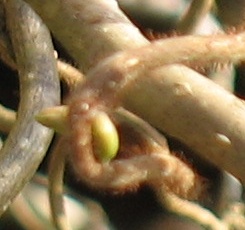
Twisty-Turny Things.
I’m not as scary as I look!

My Rather Thick Ankles.
I have to be careful my legs are not crossed or too straight.

Close up of Flowers
I might be tiny, but, great things come from small packages.
Posted in Uncategorized | 6 Comments »
I Remember when I was going college I walked every day to get the the bus. I used this time to learn the 300 or so plants which were required for me to pass the program. Fortunately in the few blocks to the bus stop there were many plants on the list. As the seasons progressed I saw the changes that occurred with each of the plants I studied from fall, through winter and into spring. I would never have noticed the bushy shrub-like tree which I stood in front of every morning until it burst into bloom at this time of the year. To my delight it was a Cornus mas or Cornelian Cherry Dogwood which produced a spectacular golden display before most other plants are in bloom. I never saw another one until….

Cornelian Cherry Dogwood.
This tree is in the Doris Page Winter Garden at Glendale Gardens

Bejeweled Branches of Cornelian Cherry Dogwood Flowers
I regularly visit the Glendale Gardens and found several in bloom, WOW is all I can say. This year since I knew I would write about Cornus mas I have been on the hunt for others and have struck several golde(en) bonanzas. I looked in the usual places and was not disappointed, two at Government House and two at Finnerty Gardens.

A Huge Cornelian Cherry Dogwood on corner of Trutch St. and Fairfield Rd.
The real surprise was on the way to Government House driving along Fairfield Road. I saw an incredible huge example at the corner of Trutch Street. and Fairfield Road. I am so glad to find a Cornus mas that is on a street side instead of of a park or fancy garden. This is a highly traveled site that anyone can go by and enjoy the beauty of this tree.
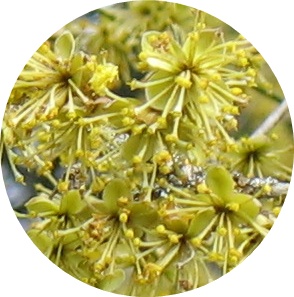
This wonderful plant comes from central and southern Europe and also is found in Western Asia where its large ‘cherry-like’ fruit is used for making jams and sauces. In Armenia the fruit is added to Vodka to flavor it. The deep red ripe fruit is an oblong drupe which is up to 3/4in. long by 1/2in wide and contains a large stone. Several Cornelian Cherry Dogwood cultivars have been selected with unusually large fruit for commercial production.

Cornus mas clad in its Summer Suit at Glendale Gardens.
The best thing about Cornus mas is that it is easy to grow and will fit into many planting schemes. It works well as a specimen or in a winter garden, in a natural or woodland setting. As it has a small stature of no more than 25ft by 15ft it will fit well into many small urban gardens. It also looks good in small feature groups or in a mixed shrub border where its bright flowers will standout from the dark background.

Attractive mid-green foliage of Cornus mas.
It is the least fussy of the large Cornus (Dogwood trees) and will tolerate any soil from dry to quite wet. It grows best in full sun to part shade which is especially needed in hot drier climates as the leaves are thin and loose moisture easily. Cornus mas plants take pruning very well and is often shaped into a several stemmed small tree which helps to show off the attractive flaking bark.

Well pruned Cornus mas showing the attractive bark.
There have been several well known forms of Cornelian Cherry Dogwoods which may be available in your area. ‘Aurea’ with golden leaves, ‘Variegata’ which is edged in cream and ‘Elegantissim’ with pink or golden highlights are some of the foliage forms. There are also golden and white fruited forms known. On top of these there are pyrimidal, dwarf and extremely cold hardy (‘Ukraine’ tolerates -30f.) selections available. Zones 5 through 8.
Links of the Week:
To learn more about Cornus mas go here: http://www.telegraph.co.uk/gardening/howtogrow/3308195/How-to-grow-Cornus-mas.html
or here: http://hcs.osu.edu/hcs/TMI/Plantlist/co_mas.html
Until we meet again on Wednesday for a new clue and the start of a new story.
Posted in Shrub/Tree | Tagged colorful berries, Cornelian Cherry, Cornelian Cherry Dogwood, Cornus mas, Deciduous Trees, European Cornel, Fairfield Road, Glendale Gardens, Government House, March blooming, March flowers, Small gardens, small trees, Specimen trees, Trees, Trutch Street, Urban gardens, winter blooming, winter flowering, winter flowers, winter interest, Winter specimen trees, Woodland trees, yellow flowers, Yellow March Blooming, yellow winter blooming flowers | 5 Comments »
I explode in a twinkling golden shimmer then slowly fade and fall like a delicate rain to earth.
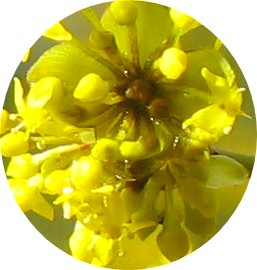
Exploding Golden Gumdrops
My glossy green summer apparel makes way for my brilliant fall fashion statement.
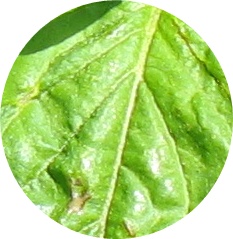
Glossy Green Foliage
I know I look like a ‘flake’ but once you get to know me you will know I really am not that type at all.
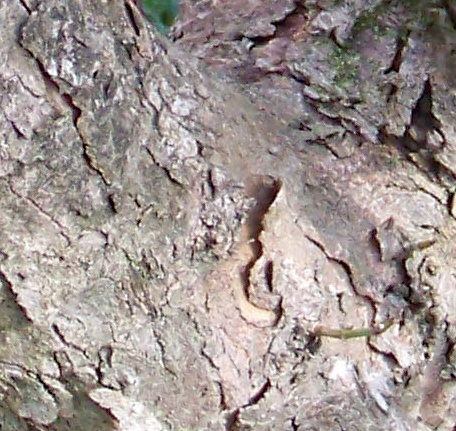
I'm a Very Attractive Flake!
Posted in Quiz, Shrub/Tree, Uncategorized | 4 Comments »
My mother was born in the Vancouver(zone 8a) area and grew up in a fairly mild climate which is that of the lower mainland. She learned to love the flowers and other plants which grew abundantly there. When she married, she and my father decided to move to Prince George(zone3a) which is located in the center of British Columbia. No longer did she see the flowers she grew up with as the climate was much colder. When my parents built their permanent home they had a garden and of course mom wanted some of her favorite plants there.

English or Common Primrose like those in my mothers gardens
When my grandparents visited from the coast they brought with them two plants, a clump of blue Siberian Iris and some butter colored English or Common Primroses(Primula vulgaris). This was my introduction to Primula species which has fascinated me ever since. Every year in the spring I am reminded of my mothers beloved English Primroses as they bloom before any other Primula.

Primulas Peeping Out From Under a Dusting of Snow.
This Primula may be called common but it is not seen as much as you might think for a long time it was seen as an old fashioned plant and newer more exciting types came into fashion, most often the Polyanthus which you see sold at every grocer and florist shop. Recently people have renewed their interest in English Primroses and exciting old forms are now available at garden centers everywhere. Old Double forms such as Dawn Ansell(white) and April Rose(red) and many others are making a return to the garden here.

Double Primulas bloom a little later.

Primula 'Hereford'
Primula vulgaris has been with us for a very long time, the Romans knew this plant and Pliny wrote about it as being a panacea for what ailed his patients. Extracts of it were commonly used for muscular complaints, paralysis and gout. It is not surprising it would have been used as it grows in a wide geographic area from Ireland through to the Ukraine and the south as far as Lebanon. it grows in many places; wooded pastures, copses, meadows being where it is found. So popular was collecting this plant in the wild that laws have been passed to protect it form being removed completely from where is grows.

Two Color Forms Growing in my Backyard.
Fortunately for us these are really easy plants to grow and divide. They need a fertile, nutrient rich moisture retaining soil for their best showing. I have noticed the lighter colored flowers bloom first, are often deliciously fragrant and are slightly more vigorous. to have a beautiful display all you have to do is remove the older leaves when the new ones start to grow and this keeps them tidy. The best way to get more plants is to divide your own or a friends, one plant can be separated into many new ones.

This planting was created from dividing 2 plants.
The best use for this plant is in masses inter-planted with other later growing perennials for later color. They also can be used as an attractive edging which i have seen in a couple of places here.

An Example of Primulas used as Edging near Playfair Park.
If you want to see more Primulas, Government House has several varieties on their gardens, look about at older houses and you might be rewarded with the sight of some of the buttery yellow plants that have lived for many years.
Links For This Week:
All you might want to know about Primula vulgaris:
http://en.wikipedia.org/wiki/Primula_vulgaris
Government House is a treasure trove of fantastic plants. Something new to see anytime of the year. Free to all with parking.
http://www.ltgov.bc.ca/
See you again on Wednesday for new clues to lead you to the identity of the next plant.
Posted in groundcovers, Mass Plantings, Perennials | Tagged blooms, Common Primrose, Common Primula, cream flowers, English primrose, English Primula, February blooming, February flowers, fragrant flowers, fragrant winter blooming, frangrant flowers, gardening, gardens, Government House, March blooming, Perennials, pink flowers, plants, Primrose, Primula, Primula vulgaris, purple flowers, Rose flowers, Victoria, white flowers, winter blooming, winter flowering, winter flowers, winter interest, yellow flowers | 3 Comments »
February 25, 2009 by J.A. Howard-Gibbon
My prim(e) name is usually connected to a Rose.

P.v
I come in many colors, pink, yellow, white and in between.

Magenta
This is a common color you will see in me!
I am a very old fashioned plant and am referred to in many old stories and poems.

I am Vein
People often say I’m vulgar.
I think I am more of a star in a star!

Pure and Pristine
If you need more come back tomorrow.
Posted in Perennials, Quiz | Tagged blooms, blossoms, botanical, cream flowers, February blooming, February flowers, flowers, fragrant flowers, fragrant winter blooming, frangrant flowers, gardening, gardens, Government House, magenta flowers, Perennials, pink flowers, PLANT, plants, Victoria, white flowers, winter blooming, winter flowering, winter flowers, winter interest, yellow flowers | 4 Comments »
February 22, 2009 by J.A. Howard-Gibbon
(Coast)Silk Tassel Bushes or Garrya elliptica are a very unusual plant to come across. The first time I saw one I was thrilled, I had never paid attention to the rather boring ungainly shrub located at the top of the long perennial border at Playfair Park in Saanich. It was early in the year and I knew that this garden had a wonderful collection of Rhododendrons which I wanted to check on, they were not in bloom yet, instead I found a Garrya.

Winter Damaged Garrya at Playfair Park.
The first thing I realized on seeing this plant for the first time is that at other times without its catkins I might have thought it was an Elaegnus which has similar leaves but not flowers. Garryas are dioecious meaning they are male or female plants(Holly is another plant like this). They both have long catkins but the males clones are the most prized. Garrya elliptica ‘James Roof’ is the most commonly grown male clone which can have catkins which are up to 12in (30 cm) long.

Garrya Male Catkins
Garrya ellipticas are true west coasters and don’t like living far from the ocean, this is because there are smaller temperature swings when closer to a large body of water (marine effect). Their range extends all along the coast from southern Oregon through California. There are a total of 18 Garrya species found along the West coast from Washington state through to Panama and east to Texas

A Happy Garrya at Glendale Gardens
Here in Victoria We live in a rain shadow which keeps us drier and warmer than the the British Columbia mainland. We have a very moderate climate which is similar to their native habitat of Chaparral, mixed evergreen forest or coastal Sage scrub. Garryas’ where first found by David Douglas in 1828 and named for Nicolas Garry who was the Secretary of the Hudson’s Bay Company. He assisted Douglas in his explorations in the Pacific Northwest.

A well placed Silk Tassel Bush
Placement of Silk Tassel Bushes here here is a very tricky thing. They like full sun to part shade preferably in mixed deciduous trees and shrubs to show off their winter blooms. The most important thing is to make sure this plant is kept out of the drying burning winds that can occur during a cold snap such as the ones we have during the November to March period. Best placement is bottoms of slopes or beside walls or fences. Another use is as a transitional plant from a naturalised setting into the more structured garden.

Winter damage to the evergreen foliage.
Garryas are easy to please, for luxuriant growth they ask for no less than 25 in.(25cm) of rain. They are not very particular to soil and tolerate clays if they are well drained and nutrient rich. They will grow into a substantial 12ft(4m) by 12ft(4m) multi-stemmed shrub which is deer and rabbit resistant. They can be lightly pruned after blooming primarily for shape, do not too far down into the bush. Although these plants can take temperatures as low as 4f(-10c) they prefer a warmer climate. Zones 7 through 10 is recommended.
Lnks to this weeks Subject:
A very informative site about Garryas
http://groups.ucanr.org/sonomamg/Plant_of_the_Month/Garrya_Elliptica.htm
Playfair Park in Saanich is one of my favorite parks for great plant specimens. I will be regularly writing about the plants here.
http://www.saanich.ca/resident/parks/playfairpark.html
David Douglas, an important plant explorer who introduced many species into cultivation.
http://en.wikipedia.org/wiki/David_Douglas
Which plant will I write about next week? It’s still a mystery to me, check back on Wednesday for a clue.
Posted in native plants, Shrub/Tree, Specimens | Tagged blooms, blossoms, botanical, broadleaved evergreen, California native plants, David Douglas, dioecious, ELLIPTICAL, February blooming, February flowers, gardens, Garrya, Garrya elliptica, Garrya elliptica James Roof, January flowering plants, native plants, Oregon native plants, Pacific North West Plants, PLANT, plants, Playfair Park, Saanich, shrubs, Silk Tassel Bush, Victoria, West Coast native Plants, west coast plants, winter blooming, winter flowering, winter flowers, winter interest | 6 Comments »
« Newer Posts - Older Posts »




















































 Stumble It!
Stumble It!






